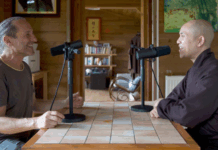Trauma-Sensitive Mindfulness
In our last article, I introduced you to mindfulness of breathing. Although the breath is an excellent anchor for most people most of the time, it is not necessarily suitable for everyone all of the time. If, as you focus on your breath, you experience an adverse reaction such as a racing heartbeat, sweaty palms, or trembling, it may be from past trauma. A trauma is an incomplete survival response, stored in the body as nervous energy. This nervous energy wants to flow, but we should be careful not to let it flow in a way which feels overwhelming. In your mindfulness practice as much as with everything else in this Daily Wellness Empowerment Program, please listen to yourself and use common sense. If focusing on your breath is too triggering, it most probably means that, at this stage, the breath is not a suitable object for you. It does not mean that you have failed or that mindfulness will never be for you. It simply means that at this stage, the breath might not be a suitable object for you. If you believe this is the case, here are four trauma-sensitive alternative mindfulness practices you can experiment with. Even if you feel comfortable using the breath as your main mindfulness anchor, you can also benefit from these practices.
- Mindfulness of Safe Sensations. Tune in any part of your body which feels safe and comfortable right now. This could be your feet, your hands, or any other part of your body that feels safe. If you like, you can gently wiggle your fingers and toes from time to time, and reappropriate these sensations. Notice how these parts of your body are alive and appropriately responsive. These sensations are a safe place for your mind to come back to. You can use these parts of your body as your mindfulness anchors, instead of the breath.
- Mindfully Scanning the Environment. From time to time, you can mindfully scan your environment. Invite all the parts of you, including the fearful parts, to slowly look around. Notice the people and things around you. Integrate the fact that this moment is safe enough. If it is, please smile. Notice the conditions of happiness you have in this moment. Thank your fears and anxieties for trying to help you, and invite them to join the reality of the present moment. If this moment is not safe enough, I hope you can reach out for help and that things will get better soon.
- Kindness Meditation. Mentally say any sentence which gives rise to a sense of kindness and compassion in you. For instance, “I want to be well and I want to help others be well,” or “I accept and love all the parts of me,” or, “May all beings be happy and well.” Then, rest in the energy field of kindness. The purpose of mentally saying this sentence is to suffuse your energy field with kindness, in the same way a drop of ink falling into a glass of water would color the water. When your mind drifts away, repeat these kind words, and again, rest, bathe in, and enjoy the energy field of kindness. Kindness meditation is a wonderful practice which can transform your experience of the present moment. After mindfulness of the breath and body, kindness meditation was the Buddha’s second favorite meditation.
- Mindfulness of Flow. Become aware of what you are doing, the people you are with, and the sounds and sights unfolding in this moment. Allow your mind to open and notice how life is a flow. Everything is changing. The present moment is in flux. Allow your actions and sensory inputs to flow in your awareness, acknowledging them without too much grasping or resistance. When you get distracted, gently come back to the present moment, and come back to the flow. Your mind is awake, connected to the present moment, yet open and fresh enough to register both the obvious and subtle changes. Mindfulness of flow can be very enjoyable.
You can experiment with each of these four practices separately and keep doing those which feel right for you. Once you have familiarized yourself with them, you can also combine them. For instance, you can mix mindfulness of safe sensations with kindness meditation. Or, mindfully scanning your environment while noticing the flow. The purpose of these practices is to regulate your nervous system so you’re neither in hyperarousal, meaning unnecessarily fired up, or hypoarousal, meaning dissociating from your body and the present moment.

You are somewhere in the middle, where your nervous system is nicely active and appropriately responsive. By ‘nicely active’, I mean that your nervous system is on: you are aware of your body and your environment, as they are, from moment to moment. And by ‘appropriately responsive’, I mean that in the absence of threat, you are peaceful, and in the presence of a threat, you are able to respond to it with the appropriate level of intensity, before calming down and self-regulating again.
Again, you want your nervous system to be nicely active and appropriately responsive, and these four practices can help you: mindfulness of safe sensations, mindfully scanning the environment, kindness meditation, and mindfulness of flow.
If you also find these practices too triggering, please feel free to put meditation and mindfulness aside for a while, and invest in the eight other self-care practices I recommend in my Daily Wellness Empowerment Program, as these should really help establish a baseline of comfort in your body and nervous system. When these eight practices have made a positive difference in your life and you feel more at ease in yourself, you can give mindfulness and meditation another try. There is no need to force. Slow and steady wins the race.
Article republished with permission from mentalhealthrevolution.org


















